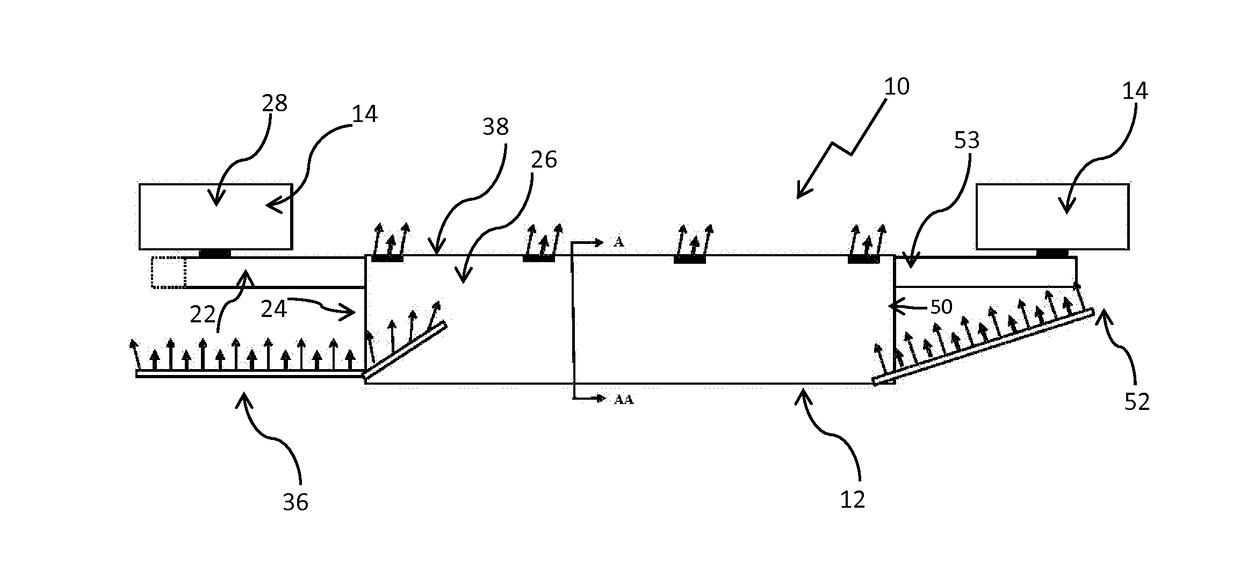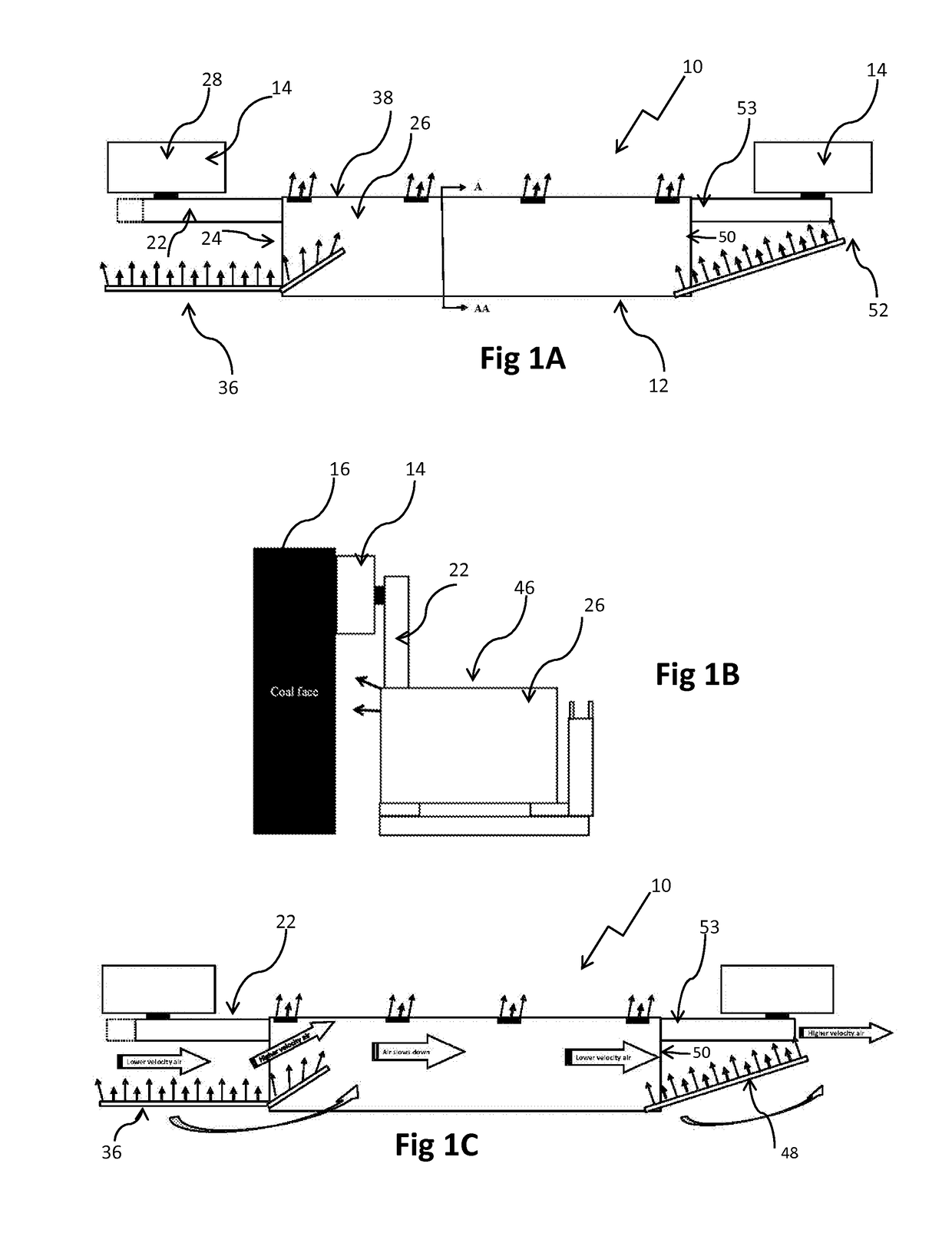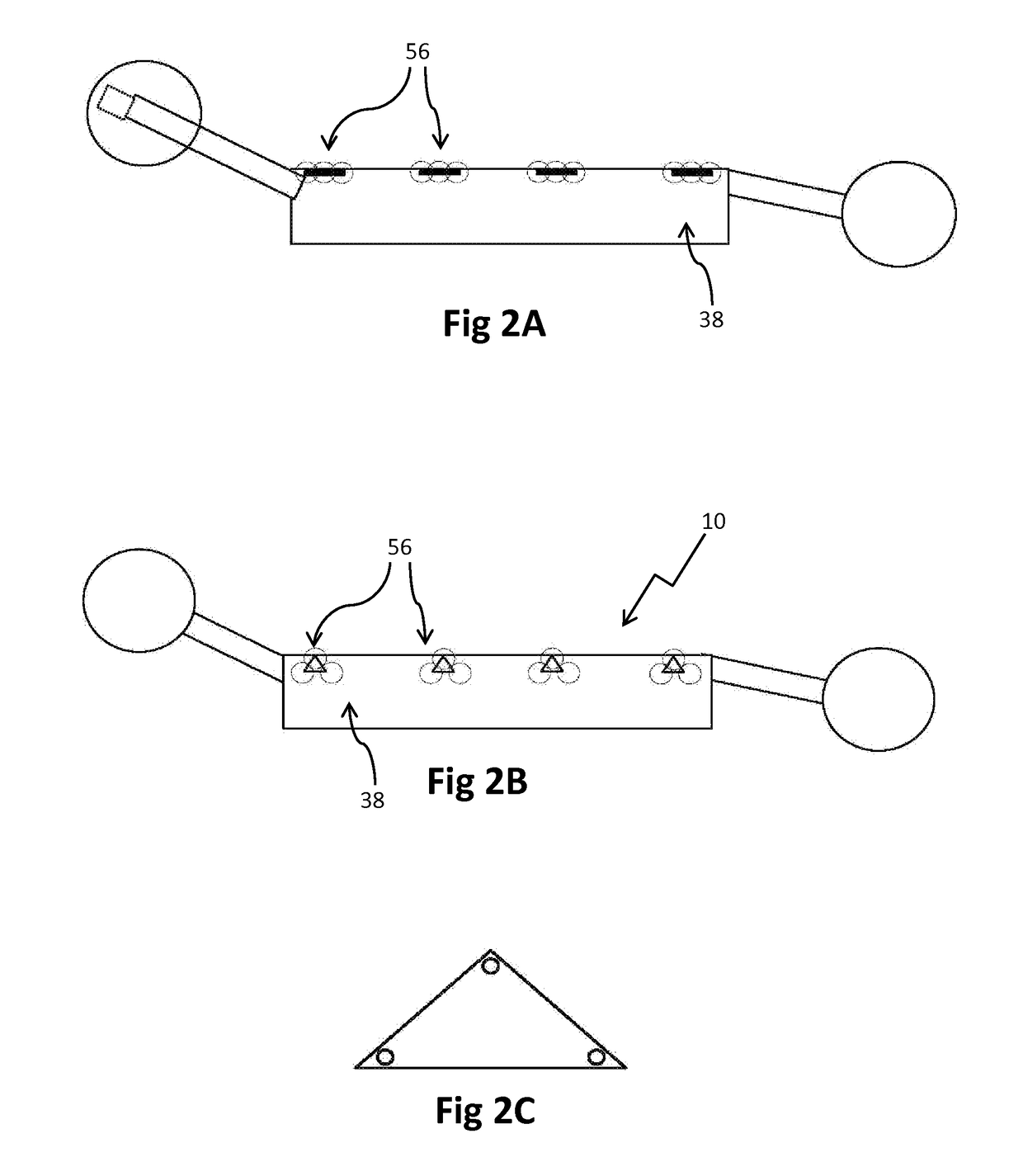Spray System for Dust Control on a Mining Machine
a mining machine and dust control technology, applied in the direction of dust removal, slitting machines, separation processes, etc., can solve the problems of reducing dust standards, affecting and affecting the dust control of mines, so as to improve the wetting of generated dust and minimize the escape of dust. , the effect of improving the wetting
- Summary
- Abstract
- Description
- Claims
- Application Information
AI Technical Summary
Benefits of technology
Problems solved by technology
Method used
Image
Examples
Embodiment Construction
[0032]A spray system 10 is generally provided and is designed for controlling dust as shown in FIGS. 1A and 1B. When a shearer machine 12 is in operation, an at least one drum 14 generates dust when a mining wall 16 is scraped. The shearer machine 12 generally operates laterally relative to a mining floor surface to shear material from the mining wall 16 by using a conveyor system.
[0033]Referring now to FIGS. 1A, 1C, 3B, 3C, 4A and 4B, the spray system 10 is provided with a set of first ranging arm sprays 18 mounted on an upper side 20 of a first ranging arm 22. The first ranging arm 22 is located on a first end 24 of a shearer machine chassis 26 and extends several feet to support a lead drum 28 (or first drum). The lead drum 28 refers to the drum that resides on the side where air enters the operating area as shown in FIG. 1C but it is known in the art that the shearer machine 12 will operate in a reverse manner where the lead drum 28 trails the shearer machine chassis 26. The set...
PUM
| Property | Measurement | Unit |
|---|---|---|
| angle | aaaaa | aaaaa |
| angle | aaaaa | aaaaa |
| angle | aaaaa | aaaaa |
Abstract
Description
Claims
Application Information
 Login to View More
Login to View More - R&D
- Intellectual Property
- Life Sciences
- Materials
- Tech Scout
- Unparalleled Data Quality
- Higher Quality Content
- 60% Fewer Hallucinations
Browse by: Latest US Patents, China's latest patents, Technical Efficacy Thesaurus, Application Domain, Technology Topic, Popular Technical Reports.
© 2025 PatSnap. All rights reserved.Legal|Privacy policy|Modern Slavery Act Transparency Statement|Sitemap|About US| Contact US: help@patsnap.com



